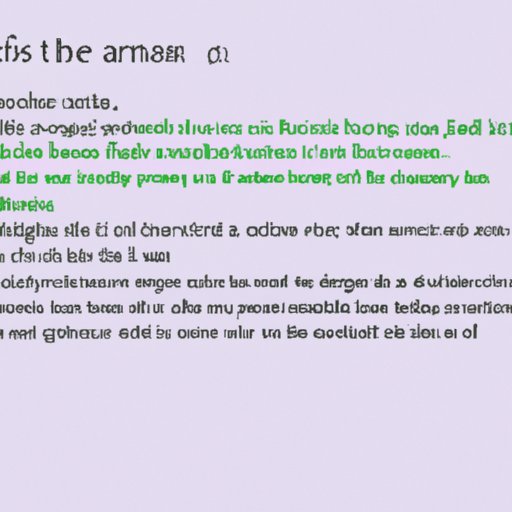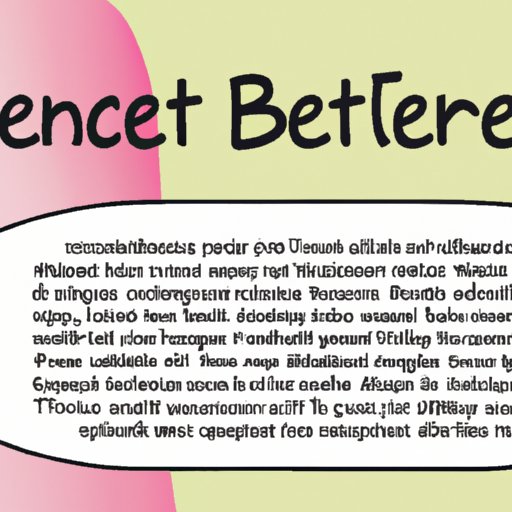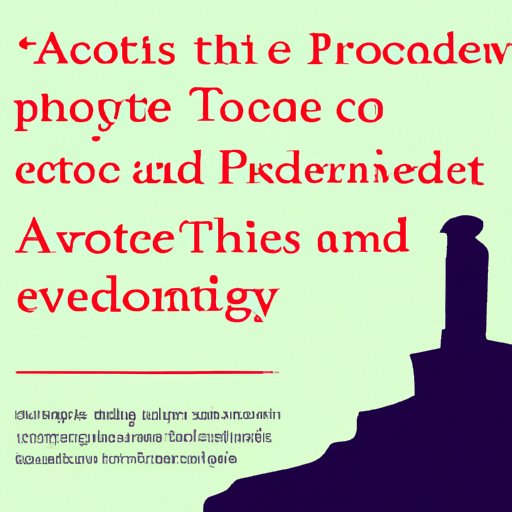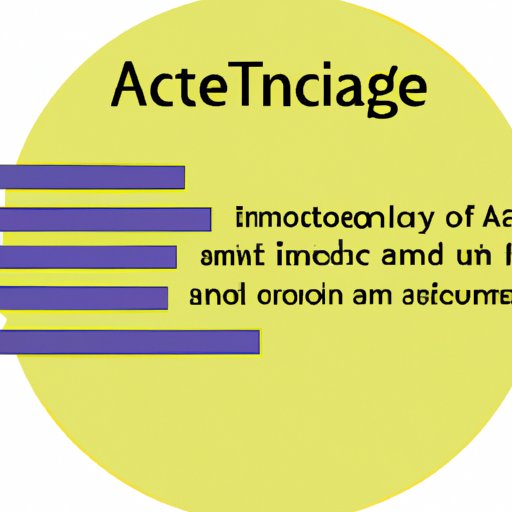Introduction
Anecdotes are short stories or examples that are used to illustrate a point in literature. They are often used to add interest and depth to a story or poem, as well as to engage the reader. Anecdotes can be used to add humor, drama, or even suspense to a piece of writing. But more than just adding to the narrative, anecdotes can also provide valuable insight into the characters and themes of a work.
Definition of Anecdote in Literature
An anecdote is defined as a short account of an event or incident, usually presented in a humorous or entertaining way. In literature, anecdotes are used to help illustrate a point or to give the reader a better understanding of a character or theme. Anecdotes can be used to create a vivid image in the reader’s mind, to draw attention to a particular detail, or to emphasize a certain point. They can also be used to provide a bit of comic relief or to set the tone for the rest of the work.

Examples of Anecdotes in Literature
One of the most famous examples of an anecdote in literature is from F. Scott Fitzgerald’s The Great Gatsby. In this novel, Nick Carraway tells the story of Jay Gatsby’s parties: “The bar is in full swing, and floating rounds of cocktails permeate the garden outside, until the air is alive with chatter and laughter, and casual innuendoes and introductions forgotten on the spot, and enthusiastic meetings between women who never knew each other’s names.” This anecdote helps to set the scene, showing the reader the decadent atmosphere of Gatsby’s parties and allowing them to imagine what it was like to be there.

Benefits of Using Anecdotes in Writing
Anecdotes can be used to great effect in all types of writing, from fiction to non-fiction. They can help to create maximum impact and lend a sense of realism to a story. Here are some of the benefits of using anecdotes in writing:
Maximum Impact
Anecdotes can be used to create maximum impact in a story. They can be used to add a sense of drama or suspense to a scene, or to illustrate a particular point or feeling. By providing a vivid description of an event or incident, anecdotes can make a story come alive for the reader.
Literary Analysis
Anecdotes can also be used to provide valuable insight into the themes and characters of a work. By examining the anecdotes used in a story, readers can gain a better understanding of the author’s intentions and the underlying messages of the work.
Creative Ways to Incorporate Anecdotes
Anecdotes can be used in many creative ways to make a story more interesting and engaging. They can be used to introduce characters, to move the plot forward, or to provide a sense of closure. Anecdotes can also be used to add humor or irony to a story.

Understanding the Power of Anecdotes in Poetry
Anecdotes are often used in poetry to convey a message or to evoke emotion in the reader. Here are some tips for understanding the power of anecdotes in poetry:
Different Types of Anecdotes
There are several different types of anecdotes that can be used in poetry. These include personal anecdotes, which tell a story about the poet’s own life; historical anecdotes, which tell a story about a past event; and literary anecdotes, which tell a story about a character or situation in a book or play.
How to Craft Engaging Poetry with Anecdotes
When crafting engaging poetry with anecdotes, it’s important to choose anecdotes that are relevant to the poem’s theme and that will resonate with the audience. It’s also important to use language that is vivid and evocative. Try to create images in the reader’s mind by using descriptive language and sensory details.
Crafting Engaging Anecdotes in Non-Fiction Writing
Anecdotes can also be used to great effect in non-fiction writing. Here are some tips for crafting engaging anecdotes in non-fiction writing:
Finding Good Sources for Anecdotes
When looking for good sources for anecdotes, it’s important to look for sources that are credible and reliable. Interviews, newspaper articles, and books are all good sources of anecdotes. It’s also important to make sure that the anecdote is relevant to the topic at hand.
Developing a Narrative Arc
When crafting an anecdote in non-fiction writing, it’s important to develop a narrative arc. This is the structure of the story, which should start with an introduction, then move through the main points, and end with a conclusion. This will help to ensure that the anecdote is both engaging and informative.
Making Connections Between Facts and Stories
When writing an anecdote in non-fiction writing, it’s important to make connections between facts and stories. This will help to ensure that the anecdote is both entertaining and informative. By making these connections, readers will be able to better understand the point being made and will be more likely to remember the information.
Conclusion
Anecdotes can be a powerful tool in literature, allowing writers to create maximum impact and provide valuable insight into characters and themes. Whether used in fiction, poetry, or non-fiction writing, anecdotes can be used to create vivid images in the reader’s mind, to introduce characters, to provide comic relief, or to emphasize a certain point. By understanding the power of anecdotes and crafting engaging anecdotes in writing, writers can create works that will captivate and engage their readers.
(Note: Is this article not meeting your expectations? Do you have knowledge or insights to share? Unlock new opportunities and expand your reach by joining our authors team. Click Registration to join us and share your expertise with our readers.)
